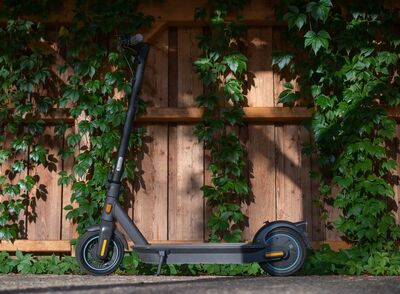News
A glance at e-scooters and the legal regulations in Europe

About the legal situation in Germany
Since April this year, new rules have been in place for using these popular means of transport. Contrary to what many people might think, a regulation regarding the obligation to wear a helmet has not been issued.
Instead, the amount of fines has increased. In addition, the areas of traffic in which e-scooters can be used have been specified, as have the technical requirements that they must meet.
Driving an e-scooter is not exempt from any rules!
Firstly, the Ordinance on Small Electric Vehicles now gives cities more flexibility to determine how e-scooters are to be used within their own city. Incidentally, the Ordinance on Small Electric Vehicles has been incorporated into the German Road Traffic Act. Notably, the rules for e-scooters are very similar to those for bicycles. However, some rules relating to motor vehicles have also been adopted.
An example of this is that e-scooters are now also permitted to follow the green arrow at traffic lights, provided one is displayed. Therefore, if the traffic light is red but there is a green arrow for cyclists, e-scooter drivers may also obey it. They are also permitted to ride in pedestrian zones like cyclists, provided they travel at walking speed and show special consideration. The same applies if a 'Cyclist free' sign is displayed. This implies 'E-scooter free'.
Penalties for traffic offences involving e-scooters have now increased, with fines ranging from 25 to 100 euros. The exact amount depends on the type of traffic offence committed.
E-scooters must be safe to use.
Technically, they must be equipped with indicators and two independent brakes. There are also stricter requirements regarding the batteries and stability. If these requirements are not met, the e-scooter cannot be driven on public roads. However, the technical requirements do not have to be met until 2027. Additionally, devices that have already been purchased are exempt. They do not have to be retrofitted.
Drinking alcohol and using e-scooters do not mix.
The blood alcohol limits are based on those for car drivers. Anyone over the age of 21 who is not on probation must observe the 0.5 and 1.1 per mille limits. Those under the age of 21 and still on probation may only drive when not under the influence of alcohol.
The above is based on the premise that the municipality has not exercised its decision-making powers. It is entitled to do so with regard to the introduction of parking or prohibited zones. Furthermore, the local authority may set a maximum number of e-scooters permitted in the area.
This includes digitally controlled parking zones, which would allow 'wild parking' and unauthorised parking to be better controlled. They can also set rules regarding rechargeable and non-rechargeable batteries. This could include introducing the acceptance of batteries at recycling centres if they are no longer functional, for example. The rules apply to both sharing providers and private users. There are no exceptions for any group.
The use of helmets is not compulsory and local authorities may impose restrictions.
Incidentally, although helmets are not compulsory, they are strongly recommended due to the high level of danger on the roads. Wearing a helmet is strongly recommended for safety reasons.
As always, the aim is to improve road safety and reduce the number of accidents. This is particularly the case with e-scooters. In addition, e-scooter drivers should be better informed about their options and the rules they must follow. Technical innovations and the flexibility of local authorities play a major role here.
A glance across the border
Looking across the border reveals that regulations can differ significantly. For example, sharing providers have been banned in Paris, France since 2023. E-scooters may only be used and purchased privately. The sharing service has been abolished due to the extreme way vehicle parking is handled.
Europe agrees on the drink-drive limit, with the exception of Austria. Here, the limit for e-scooter drivers is 0.8 per mille. Conversely, only a few countries beyond Germany, such as France, Sweden and Italy, require compulsory insurance. While Germany only recommends wearing a helmet, it is compulsory in Italy, Denmark, Portugal and Croatia.
In the Netherlands, scooters cannot be ridden at all. In contrast, they are permitted in Italy, Scandinavia and Croatia, where there are stricter requirements regarding where they can be used.
Anyone intending to use e-scooters while on holiday should therefore find out beforehand what is and isn't allowed.
Source: Pixabay/e-scooter-5432641_1280
